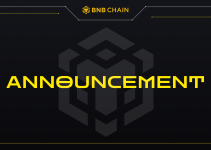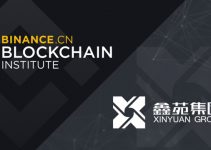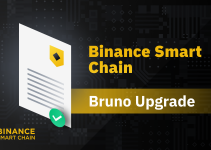Table of Contents

We are thrilled to embark on an exciting journey together – where we prioritize and highlight the incredible initiatives that drive innovation and foster growth within the BNB Chain ecosystem.
In the ever-evolving world of blockchain technology, BNB Chain has emerged as a trailblazer, revolutionizing how we perceive finance, decentralized applications, and the potential of digital assets. At the heart of this dynamic ecosystem lies our bounty bank, designed to support, reward, and promote the remarkable initiatives that contribute to the prosperity of the BNB Chain community.
This blog post will serve as a dedicated platform to shed light on the diverse initiatives being prioritized within the BNB Chain ecosystem.
BNB Greenfield
| NAME | TRACK (DEFI, AI, INFRA, GAMING) | DESCRIPTION |
|---|---|---|
| Mobile App for Greenfield | Infra | The challenge is to develop a user-friendly iPhone/Android application that enables users to manage their data on BNB Greenfield. The application’s primary focus should be on delivering an exceptional user experience (UX) and user interface (UI), ensuring that the user journey is engaging and intuitive. The application can incorporate gamification principles such as badges and rankings to enhance user engagement. The application aims to provide users with a seamless and convenient way to interact with their data on BNB Greenfield. It should offer features for uploading, organizing, and accessing stored data, emphasizing user-friendly navigation and visually appealing design. The application should prioritize ease of use and aim to make data management tasks as effortless as possible for the users. As part of the challenge’s acceptance criteria, the final deliverable is deploying the developed application to the respective app markets, such as the Apple App Store and Google Play Store. |
| Migration tooling from other dStorge (Filecoin, Arweave, Storj) | Infra | The challenge is to develop a migration application for BNB Greenfield that provides a seamless solution for migrating files from various decentralized storage solutions like AWS, Filecoin, Arweave, Storj, etc. The tool should prioritize user experience (UX) and ease of use, enabling users to transfer their files to BNB Greenfield effortlessly. Integration with popular integrated development environments (IDEs) such as VSCode, Eclipse, Android Studio, Xcode, and IntelliJ IDEA should be a key focus, aligning with their design principles. The migration tool should offer a user-friendly and automatically identify the files for migration through an intuitive graphical user interface (GUI) or interactive interface, reducing the need for extensive configuration files. Users should be able to input essential details, such as private keys and file paths, directly through the GUI. It is advisable to integrate a wallet solution to eliminate the need for hardcoding private keys altogether, enhancing security and user experience. The tool should be designed to be extendable, allowing for the easy addition of more networks as sources for migration. This flexibility ensures that the tool can adapt to evolving storage solutions and cater to the needs of both web2 and web3 developers. As part of the acceptance criteria for the challenge, the application should be deployed to the extension marketplace, supporting at least two centralized and one decentralized network to showcase its capabilities in facilitating smooth file migration for various development environments. |
| NFT minting tooling | Infra | The challenge is to develop programmability features for BNB Greenfield’s decentralized storage ecosystem. This involves mirroring the existing resources, such as buckets, objects, and groups on the BNB Smart Chain (BSC) as non-fungible tokens (NFTs) conforming to the ERC-721 standard. By mirroring these resources on the BSC, they can be managed and manipulated through smart contracts, providing greater programmability and control over data storage on Greenfield. Integrating Greenfield Blockchain and BSC enables seamless synchronization of data and operations. Any changes made to the decentralized application on BSC will directly impact the storage format, access permissions, and other aspects of the data on Greenfield. This integration enhances flexibility and accessibility and streamlines the data management process within the decentralized storage ecosystem. |
| Decentralised AI Training | AI | The challenge is decentralizing the AI training process, which is currently limited to a few corporations or high-profile startups that can afford the massive computational resources required. The objective is to create a framework within BNB Greenfield that allows AI models to be trained collaboratively and securely, fostering the sharing of training data. The concept revolves around sharing training batches or splitting the training data, demonstrating feasibility using small-sized datasets and frameworks like Torch or TensorFlow. The proposed solution ensures fairness and incentivization by recording all contributing trainers as part of the model’s metadata. When a user wants to access a trained model, a fee will be charged, split among the trainers based on factors like the amount of training data processed or the GPU cycles utilized. This approach promotes collaboration while providing a decentralized alternative for AI training accessible to a broader range of participants. To prevent fraud and maintain the integrity of the training process, the solution should incorporate a verification mechanism. This process will confirm that the designated trainers performed the training, safeguarding against malicious activities. By addressing these challenges and implementing a decentralized AI training solution within BNB Greenfield, the platform can democratize access to AI technologies and foster a collaborative environment for developing and sharing trained models. |
| Decentralized SocialFi | AI | BNB Greenfield can be used to store access to social information, member-only newsletters, trading strategies, scientific papers, and journals. They can store (as proof) the results of reproducible experiments and incentivize content creators to upload new findings and strategies over time. Can the peer review process be more fair (perhaps through quadratic voting)? How can experimental code be made reproducible? Often these are written as one-off scripts and can be hard to recreate, even for famous publications. We also need to enable massive-scale data science on the data collected in these papers. We can make metadata analysis easy because the data collected on Greenfield can be analyzed and imputed straightforwardly. |
| Trustless Notary | Infra | Notaries play a crucial role in establishing social trust and verifying the authenticity of clients, thereby preventing malicious actors from engaging in fraudulent activities. However, the advent of smart contracts enables the creation of permissionless notaries, making it economically unfeasible to attempt malicious activity such as Sybil attacks. An example of a trustless notary could resemble an on-chain auction, where all participants, including clients and storage providers, must commit a certain amount of collateral as a prerequisite for participation. By conducting the auction through a smart contract, anyone can verify that the winners were determined through a transparent process. The utilization of economic collateral from both clients and storage providers can establish a slashing mechanism that discourages malicious actors. In return for overseeing the auction, the notary maintainer might receive compensation in various forms. This could include a portion of fees for facilitating the completion of the deals, collecting a fee based on the locked collateral (such as a fraction of the yield if staked BNB is used as collateral), or a combination of both options. |
| Blockchain of Things | Infra | IoT devices are crucial in monitoring and measuring the temperature, humidity, and CO2 levels in diverse environments. However, collecting and uploading this data to a public repository for further utilization poses significant difficulties. Moreover, the data quickly accumulate, making storing and processing centrally challenging. To enhance security and ensure greater availability and reliability, decentralization is a key approach for IoT devices. By adopting a decentralized system, the risks of security breaches can be mitigated while also improving the overall performance and dependability of the devices. As part of this endeavor, you are to construct and demonstrate an end-to-end system that seamlessly connects an IoT device (such as a Raspberry Pi) to a queue pipeline, facilitating the smooth transfer and storage of data onto Greenfield. |
opBNB
| NAME | TRACK (DEFI, AI, INFRA, GAMING) | DESCRIPTION |
|---|---|---|
| Rust and Erigon opBNB Client | Infra | Supporting multiple client options is key to making the ecosystem healthy, especially for opBNB. It will benefit the opBNB sequencer ecosystem. Currently, the client of opBNB is based on the op-geth, and it is necessary to cover other major clients, like clients in Rust Reth or Erigon. Please note we do not limit the implementation of the client. Reth and Erigon are just two examples. https://github.com/paradigmxyz/reth, https://github.com/node-real/bsc-erigon. |
| Interoperability tools between Greenfield and opBNB | Infra | The BNB Chain ecosystem allows different chains to communicate with each other natively. BSC and Greenfield use a relayer system to mirror objects across the chains. We want to extend this feature to opBNB and Greenfield as well. This will enable smooth cross-chain interactions between opBNB and Greenfield. To ensure the security and integrity of the cross-chain communication, we have implemented a new relayer system between BSC and Greenfield. Please refer to the Greenfield design document and SDK for more details. For opBNB, we assume a similar mechanism should be in place. We want the following two key features to be implemented: 1. The solution supports transferring assets from opBNB to Greenfield, including BNB and other BEP 20 tokens. 2. The objects created on Greenfield can be mirrored to opBNB and vice-versa. |
BNB Smart Chain
| Multi-chain wallet service | Objective: Design and implement a seamless user interface and experience that allows users to navigate and interact with various BNB-related networks within one platform. BNBChain encompasses a variety of BNB-affiliated networks, including BNB Smart Chain (BSC), zkBNB, BNB Beacon Chain, and BNB Greenfield. Users need to manually input details to connect their wallets and Web3 middleware providers to the appropriate Chain ID and Network ID to interface with the correct chain. This challenge seeks a solution to simplify this process, enabling users to manage and switch between networks effortlessly. Considerations: The solution should emphasize user-friendliness, ease of navigation, and secure connection to each network. It should seamlessly accommodate and manage connections to multiple networks, simplifying the user experience and reducing the necessity for manual inputs. |
| Transparent Governance for BNBChain | Objective: Develop a comprehensive tool or platform that visually illustrates and records the governance history and the current status over the past 3 years on BSC. BSC’s governance mechanisms are key to its function and growth. Participants must dive deep into these mechanisms, understand the intricacies, and create a solution that displays the flow of decision-making, voting outcomes, proposal initiation, and execution. The challenge also involves showcasing how these governance decisions impact the overall state and evolution of the BSC network. Considerations: The tool should be user-friendly, visually appealing, and provide clear and concise information. Moreover, the tool should allow for real-time updates on governance decisions and status. |
| Very Fast Sync | Objective: Create an innovative method or algorithm to accelerate the synchronization process for new network nodes. As a blockchain network expands, it becomes increasingly time-consuming for a new node to synchronize with the latest block. Your task is to conceive an efficient solution to quicken this sync process, ensuring it is less resource-intensive and more energy-efficient. This would involve exploring the current sync processes, identifying bottlenecks, and proposing solutions that maintain data integrity while increasing speed. Considerations: The solution should prioritize data integrity and security. Moreover, it should consider the potential growth and scale of the BSC network. |
| Recoverable DB: even force kill is ok | Objective: Develop a robust mechanism that ensures a BSC node’s database can be recovered even after a forced termination. At times, full nodes may experience damage to their databases due to ungraceful shutdowns or forced terminations, which leads to a necessity for re-syncing from scratch, a time-consuming and resource-heavy process. This challenge requires a deep understanding of the BSC storage layout and database management. Your task is to create a system ensuring data integrity and recoverability, even in sudden node terminations. Considerations: The solution should emphasize data integrity and robustness against unexpected shutdowns, all while ensuring minimal downtime for the node |


